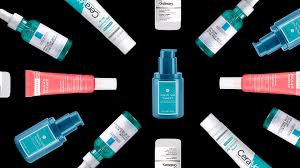
How to Treat Breakouts with Salicylic Acid
Salicylic acid, a powerful beta hydroxy acid (BHA), has earned its place as one of the most effective ingredients for tackling blemishes and acne-related skin issues across all skin types and ages.
You’ll commonly find salicylic acid in over-the-counter spot treatments, toners, cleansers, and professional-grade facial products used by dermatologists and estheticians.
If you’re dealing with frequent breakouts, clogged pores, or acne-prone skin, incorporating salicylic acid into your routine may offer the transformation your complexion truly needs.
Today, we’ll explore how this BHA works, how to apply it safely, what kind of results you can expect, and the best practices to maximize its acne-fighting potential.
How Does Salicylic Acid Work to Treat Spots and Breakouts?
Salicylic acid works by loosening and dissolving the glue-like bonds that hold dead skin cells on the skin’s surface, which can otherwise clog pores and contribute to blackheads and blemishes.
By encouraging cell turnover, it helps to clear dull, rough, or textured skin while preventing dead cells from accumulating and creating blockages that cause acne.
One of its most unique features is that it is oil-soluble, meaning it can penetrate deeper into the skin’s oily layers and clear out congested pores from within.
Once inside the pores, it breaks down excess sebum, bacteria, and debris—three of the primary causes of breakouts—making it particularly helpful for oily or acne-prone skin types.
Is Salicylic Acid Suitable for Everyone?
Salicylic acid is considered highly effective, but its potency means it’s not always well-tolerated by sensitive skin, so caution is recommended if your skin reacts easily to active ingredients.
Before using salicylic acid regularly, it’s best to perform a patch test or speak to a dermatologist who can recommend the right concentration and formula for your specific skin type.
Most products on the market range from 0.5% to 2% salicylic acid for home use, with higher strengths—up to 6%—reserved for professional treatments or specific formulations.
It’s also important to understand that salicylic acid is often combined with other ingredients, and the overall formulation can impact how your skin tolerates the product.
Which Salicylic Acid Product Should I Use?
The beauty of modern skincare is that salicylic acid is now available in a wide variety of product forms—from foaming cleansers and facial wipes to toners, serums, and spot treatments.
For mild prevention and maintenance, a cleanser or toner with salicylic acid may be enough to help remove daily buildup and keep your skin balanced without over-drying it.
However, if your goal is to treat existing breakouts or prevent recurring acne, a leave-on product like a serum or gel is ideal because it remains on the skin longer to work more effectively.
Serums tend to penetrate deeper layers of the skin and offer a more targeted, long-lasting approach compared to wash-off products like cleansers, which are rinsed off quickly.
How Long Does Salicylic Acid Take to Clear Breakouts?
While some spot treatments can show visible results within 24 to 48 hours, salicylic acid typically requires consistent use over several days or weeks to fully clear active acne.
You may notice a reduction in swelling and redness within the first few uses, but full skin turnover and improvement can take around 4 to 6 weeks of regular application.
Skin doesn’t transform overnight, and patience is key—especially since overusing salicylic acid or combining it with too many other actives can backfire and cause irritation.
If you’ve been using salicylic acid consistently for over six weeks with little to no improvement, it may be time to reassess the concentration or seek professional guidance.
How Often Should You Use Salicylic Acid?
Because salicylic acid is an exfoliating acid, it’s crucial to ease into its use—start by applying it once every other day to allow your skin to adjust without becoming overly dry.
If your skin shows no signs of irritation, flaking, or redness after two weeks, you may increase the frequency to daily use, especially if it’s your only form of exfoliation.
Those who are already using glycolic acid, lactic acid, or physical scrubs should avoid combining these with salicylic acid too often, as it can overwhelm the skin and lead to damage.
Signs of overuse include tightness, burning, itchiness, and visible peeling—all signals that your skin barrier needs a break and some gentle hydration.
What Should I Use With Salicylic Acid to Avoid Dryness?
To counterbalance any drying effects of salicylic acid, it’s important to layer in hydrating ingredients like hyaluronic acid, glycerin, and soothing botanicals to replenish moisture.
A well-rounded routine might include a gentle, fragrance-free cleanser, a salicylic acid treatment, a humectant-based serum, and a lightweight but nourishing moisturiser.
Hydration is essential when using exfoliants because a compromised moisture barrier can lead to inflammation, breakouts, and heightened sensitivity over time.
Ingredients like niacinamide can also support skin clarity and reduce inflammation without the harshness of additional acids, making them excellent companions to salicylic acid.
Should I Moisturize After Using Salicylic Acid?
Yes—moisturising after applying salicylic acid is not only safe but highly recommended to maintain skin health and avoid stripping your skin of its protective barrier.
Salicylic acid targets deeper issues in the pores, while moisturisers work at the surface to protect, hydrate, and seal in essential nutrients and water molecules.
After using a salicylic-based serum or toner, follow up with a non-comedogenic moisturiser that contains ingredients like ceramides or squalane to support barrier repair.
Think of your moisturiser as a protective shield that helps skin maintain its strength while withstanding external elements like pollution, wind, and UV exposure.
Can You Apply Salicylic Acid on a Popped Pimple?
While it’s best not to pop pimples at all, if you have already done so, applying salicylic acid can help prevent infection and inflammation—but expect it to sting upon contact.
To reduce the risk of irritation, start by washing the area with a gentle, antibacterial cleanser that doesn’t foam excessively or contain alcohol or fragrance.
Follow up with a toner or cotton pad soaked in salicylic acid, applied gently over the area—resist the urge to rub or press too hard to avoid causing further trauma.
Seal in the treatment with a soothing moisturiser and a broad-spectrum sunscreen to ensure the healing skin is protected from harmful UV rays that can cause hyperpigmentation.
A Post-Popping Routine to Prevent Further Breakouts
Step one: cleanse the skin thoroughly using a mild cleanser that includes antibacterial ingredients like benzoyl peroxide to reduce the chance of spreading bacteria.
Step two: gently sweep an acid toner with salicylic acid across the affected area, using soft motions and avoiding too much pressure to prevent damaging fragile, healing skin.
Step three: moisturise using a hydrating, non-comedogenic product to calm the skin, then apply a mineral-based sunscreen in the daytime to guard against further irritation.
By following these simple steps, you reduce the chances of developing dark spots, scarring, or a secondary breakout caused by inflammation or residual bacteria.
Final Tips for Using Salicylic Acid Effectively
Always apply sunscreen daily when using exfoliating acids like salicylic acid, as your skin becomes more photosensitive and prone to damage from even minimal sun exposure.
Avoid using retinol or other strong exfoliants on the same day unless advised by a dermatologist, as this can overload your skin and trigger dryness or chemical burns.
Look for signs of improvement like fewer new breakouts, smoother skin texture, and a brighter overall complexion—these indicate the acid is working effectively.
With consistent use, the right supporting ingredients, and a balanced skincare routine, salicylic acid can be a game-changer in your fight against acne and congested pores.
Closing Thoughts
Salicylic acid is a multi-tasking wonder for those battling breakouts, but using it wisely and consistently is the key to unlocking its full potential without harming your skin.
Start slow, listen to your skin, and build a routine that respects its needs while helping you achieve a clearer, calmer, and more radiant complexion over time.
For more skincare advice, product recommendations, and tips on how to achieve acne-free skin, follow us on Instagram or explore our blog for expert insights and tutorials.


